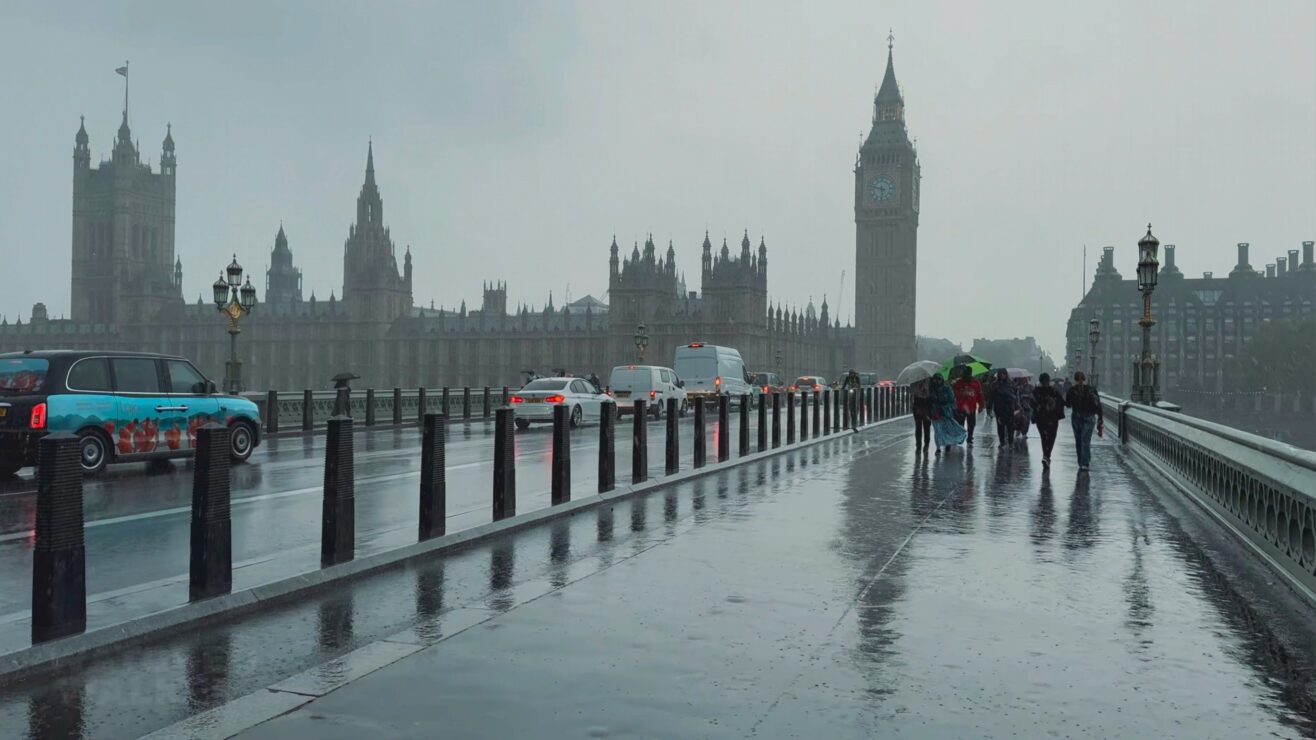The Department for Education’s Higher education mental health implementation taskforce intends to publish its long-awaited “second stage report” in November.
This article discusses death by suicide. If you are affected in any way by reading this, please call Samaritans for free on 116 123 (UK and Republic of Ireland).
Now seems like an appropriate moment to reflect on what triggered the creation of this non-statutory initiative—and, more importantly, what was declined: clarity, parity, and accountability regarding the duty of care owed by higher education providers to their students.
Here I critically assess the government’s response to our petition regarding legal accountability in higher education—demonstrating its inadequacy in light of recent student tragedies.
It presents a fictitious case involving Oliver Blenkinsop, a second-year law student at the prestigious University of Placeton.
Inspired by actual events, this story explains the critical importance of learning from past incidents—something the government seems unwilling to do, given its National Review of Higher Education Student Suicides is only looking at contemporary cases.
By failing to review historical cases, the government not only undermines the potential effectiveness of its ongoing review, but it also avoids confronting the difficult questions surrounding systemic failures that have contributed to previous tragedies.
What is needed is scenario analysis – a comprehensive examination of past incidents that would reveal the potentially devastating consequences of inaction.
These sorts of analyses not only inform proactive measures, but also lay the groundwork for establishing a statutory duty of care to protect students.
The circumstances described in this fictitious case scenario raise real questions about accountability in higher education and underline the immediate need for transformative change—both cultural and legal.
This entails not only structural or policy changes, but also a shift in attitudes, values, and practices within institutions.
Oliver’s last days at the University of Placeton
The University of Placeton, a prestigious institution located in a quiet, leafy town, was known for its impressive academic results and a sprawling campus that housed over 15,000 students. Nestled in the historic buildings were state-of-the-art lecture halls, research facilities, and accommodation blocks spread across its vast grounds.
But, for all its charm, University of Placeton had a darker undercurrent—an institution proud of its academic reputation but less attuned to the personal crises unfolding behind the walls of its residence halls. Students often joked that “staff were like ghosts—hardly ever around, barely making a sound, and almost impossible to reach when it really mattered,” a sentiment that now felt far more bitter than humorous to those who lived there.
Oliver was an energetic student in his second year, studying law. His friends described him as outgoing and always ready to take on a new challenge. But, in recent weeks, that vibrant energy had dimmed.
Oliver had started skipping lectures, avoiding meetups, and spending long hours alone in his room. He confided in his friend, Sarah, that he was feeling overwhelmed with the pressure of his course, struggling with personal issues, and just couldn’t seem to get on top of everything.
One Friday evening, Oliver’s friends noticed something seriously wrong. They had gathered in the common room to go out for dinner, but Oliver, sitting alone, was silent. When they asked if he wanted to come along, he simply nodded, got up, and muttered, “Maybe later.”
Sarah saw the distant look in his eyes and stayed behind for a few minutes. “I’m fine,” Oliver had insisted, his voice trembling. But Sarah wasn’t convinced. She tried knocking on his door later that night, but he didn’t answer. She thought he might just be tired or asleep.
A growing fear
By Saturday morning, Oliver hadn’t shown up for breakfast or replied to any messages. His friends grew concerned. They had all tried calling and knocking on his door, but there was still no response.
By Saturday evening, Sarah went straight to the halls’ reception and informed the staff. She explained that Oliver wasn’t answering and that the last time they had seen him, he wasn’t doing well.
The receptionist, however, was unfazed. They reassured her that Oliver was probably fine and that they couldn’t simply open a student’s room unless there was a clear emergency. “It’s probably just a privacy thing,” the staff member said, showing no sense of urgency. “University policy prevents us from intervening too quickly in these cases.”
Sarah was stunned. “But we’ve been knocking for hours! He wasn’t himself last night. We think he could be in trouble!” she pleaded, growing more and more agitated.
The staff agreed to file a report but insisted that further action would need to be approved by a senior member of staff, who wouldn’t be available until Monday morning. Hours ticked by as Oliver’s friends remained helpless, pacing outside his door, unable to reach him.
A tragic discovery
When the door was finally opened by a security team on Monday, the scene inside was heartbreaking. Oliver lay unconscious, having collapsed after an undiagnosed medical condition spiralled out of control.
He was rushed to the hospital, but the damage had been done—Oliver’s condition was severe, and he faced a long recovery, with the real possibility of permanent impairment.
Sarah and Oliver’s other friends were devastated. They had done everything they could, raising alarms and pleading for action. But the institution that should have safeguarded Oliver during this critical period had failed him.
For two days, he had been alone behind a closed door, and the university’s bureaucratic indifference had made them wait too long.
Institutional failure?
University of Placeton’s failure wasn’t simply the result of staff misunderstanding the situation. It was the product of an institutional culture that prioritised administrative protocols and privacy concerns over human lives.
The rigid application of university policy—designed to avoid any liability in routine matters—had prevented staff from taking decisive action when it was most needed.
Staff hesitated because they didn’t have a clear framework that compelled them to act in emergencies involving student safety and welfare. The institution hadn’t implemented proper training for its accommodation staff on how to handle situations where immediate intervention could prevent significant deterioration and potentially save a life.
Worse, the staff were more concerned with the consequences of breaching privacy regulations than with the consequences of doing nothing.
At the heart of this scenario is a gap in the legal accountability framework. The University of Placeton’s refusal to act decisively wasn’t malicious, but it was negligent. Under current health and safety laws, the university could argue that it didn’t directly cause Oliver’s medical crisis, and privacy policies would likely protect them from liability regarding their hesitation to intervene.
But the failure to act promptly, especially when there were strong indicators of a serious problem, shows a systemic lack of a duty of care. With no legal obligation to protect students from harm caused by inaction, institutions like University of Placeton can continue to hide behind vague interpretations of the law. This leaves students like Oliver at risk.
The government response
This issue goes beyond University of Placeton’s walls. The government’s response to growing concerns about student safety and welfare has been inadequate—failing to do everything within its power to help.
In response to our petition advocating for legal accountability, the previous government insisted that higher education providers “already possess” a general duty of care, arguing that they are expected to provide “educational and pastoral services to a reasonable standard”.
But this perspective oversimplifies the realities of student safety and welfare, and fails to fully grasp the mixture of risks and responsibilities that universities should manage effectively:
Duty of care vs. standard of care: The government’s response conflates these two concepts. While universities may indeed have a moral, ethical and professional duty of care, this duty is not enforced with the rigour necessary to protect students in critical moments of crisis.
Legally, the duty typically covers actions but often excludes omissions, meaning universities are not always held accountable for failing to act. This distinction is subtle but crucial—a mere expectation that universities “act reasonably” does not compel them to take proactive steps to prevent harm.
Oliver’s scenario illustrates how an institution can adhere to “reasonable” standards in their actions, while still failing to intervene in time to prevent disaster due to inaction.
Failure to address omissions: The government’s response also fails to consider omissions as a key issue. In the Placeton scenario, it wasn’t the university’s actions that caused his crisis but their failure to act—specifically the delay in opening his door or escalating the situation earlier.
This failure amounts to negligence, yet the current legal framework offers little accountability for such omissions, which can be just as deadly as direct harm. Oliver’s scenario shows how adhering to “reasonable” standards in actions may still result in a failure to prevent harm due to critical inaction.
Narrow focus on mental health: While the government’s response centres on mental health support, it overlooks the broader array of challenges that students face. Universities must be held accountable for ensuring a safe environment that addresses various issues, including physical safety and personal vulnerabilities, and for delivering timely interventions.
This responsibility should involve implementing comprehensive support systems, providing education on potential dangers, and establishing policies that promote student safety and welfare. Practices and procedures must also be flexible and adaptive to allow for the unexpected. A narrow focus on mental health fails to address systemic shortcomings that can lead to significant harm.
Oliver’s scenario wasn’t solely about mental health; it was about a broader institutional failure to protect students from avoidable harm that could and should have been addressed through improved support systems and proactive measures, regardless of its nature.
The need for legal reform: Legal accountability could serve as a powerful driver for systemic change. If universities faced consequences for failing their students, they would be incentivised to invest in better training for staff, establish clearer reporting and intervention mechanisms, and create a culture where student safety and welfare is genuinely prioritised.
This could lead to safer campus environments, improved mental health support, and ultimately, a reduction in preventable tragedies. Without such reform, universities like Placeton remain insulated from the repercussions of their inaction, perpetuating a cycle of negligence that places students at risk.
A path forward
Oliver’s scenario, like many others, could reveal significant gaps in current policies and practices. To prevent future tragedies, there must be a direct conversation with ministers, focused not on surface-level solutions, but on real legal accountability.
- Engaging with bereaved families: The voices of those most affected—bereaved families—must be heard in these discussions. These families understand firsthand the devastating consequences of institutional failure and can offer critical insights into how the system can be improved.
- Creating a forum for dialogue: Establishing a formal space where bereaved families, students, universities, and government officials can come together is essential. This forum would allow for meaningful discussion on the gaps in duty of care and what reforms are truly necessary.
- Public accountability: Ministers must take responsibility for their engagement with these families and show clear steps towards addressing their concerns. Transparency in these discussions is key to rebuilding trust between students, their families, and the higher education sector.
- Legal and policy development: Bereaved families should have a seat at the table when legal frameworks and policies surrounding duty of care are being developed. Their experiences will ensure that reforms are not only effective but also empathetic.
Current policies do not go far enough to protect students from institutional negligence. Engagement with ministers is necessary to push forward meaningful changes and to ensure that no more students, for example, are left unprotected behind closed doors.
To date, no minister has held a meaningful conversation with bereaved families about the urgent need to set minimum standards of behaviour and protect students with a legal duty of care in higher education. Instead, our parliamentary petition—which called for legal clarity and parity and garnered the support of over 128,000 registered voters—was dismissed without due diligence.
The new Minister for Skills, Baroness Jacqui Smith, has declined to meet with members of ForThe100. I’m still hoping she will find a slot to discuss the duty of care that is owed to students.













Thank you for an interesting and thought-provoking read. I can see how this could be interpreted (but not necessarily implemented) in a straightforward manner for a traditional residential undergraduate student. However, there are many other types of student and it would be extremely helpful to work through scenarios (and, sadly, who has liability) in each of those. Here are a few: – Degree apprenticeships – Postgraduate qualifications where the student is an employee of a sponsor organisation and working is a prerequisite (CBT, for example), but may be part-time, mature and non-residential. – Joint degrees between more than one organisation… Read more »
Duty of care only applies to what the university has real control of, in this case it’s the university owned halls, and thus is fully in control of the university. If this happened in a private accomodation, then it’s beyond what the university has control of, so you couldn’t unlock the door. however, if you’ve been told of a serious risk of life, you may you may have an obligation to try and contact them, or call for emergency service if the risk was deemed very high. Emergency services have no issues with breakdown a few doors to save a… Read more »
There is nonetheless an increasingly common grey area re halls whose management and maintenance is outsourced, not that I approve of this setup – but all the same this does complicate things and does encourage a transactional approach to student support. If the above horrible scenario were to have happened in a fully-private accommodation, then re the point about the institution having a potential obligation to try to contact the student, the University would presumably be expected to have support staff on call 24/7 to triage incidents taking place entirely off campus. The end result would likely be the phone… Read more »
“Universities must be held accountable for ensuring a safe environment that addresses various issues, including physical safety and personal vulnerabilities, and for delivering timely interventions.” I do think this is extremely difficult when the students concerned are adults, though. If a student does not disclose full detail of their mental or physical health situation, or if the student for instance refuses to engage with the triage process, refuses the support provided, and/or only partially engages meaning the full situation is never completely understood, the University literally cannot deliver the correct type of timely interventions. I’ve lost count of the number… Read more »